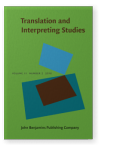Vol. 11:2 (2016) ► pp.177–201
“The committee in my head”
Examining self-talk of American Sign Language-English interpreters
Anecdotally, interpreters report experiencing self-talk before, during, and after assignments; however, this inner dialogue has neither been confirmed nor described in the literature. Prior studies suggest that guided self-talk can boost performance in learning and human performance activities. It follows that self-talk may also affect interpreting performance, either positively or negatively. In this study, reports of self-talk of American Sign Language-English interpreters were examined for the following characteristics: frequency, valence, overtness, self-determination, motivation, and function. Participants (N = 445) responded to online survey questions about the experience of self-talk in their interpreting work. For frequency, more than half of the respondents reported experiencing self-talk between 1–5 times during their work. Regarding valence, 62% of respondents reported a mix of positive and negative self-talk about their performance. For overtness, 62% reported talking (or signing) aloud in isolated settings about their work experiences. Regarding self-determination, nearly half of the respondents (48%) reported self-talk as a mix of conscious and unconscious thoughts. Eighty-nine percent of the respondents reported using self-talk for motivation, but 65% reported their self-talk was actually de-motivational at times. The most frequently reported function of self-talk was to improve interpreting. The findings offer a rich description of self-talk by American Sign Language-English interpreters. We suggest that more information about self-talk during interpretation may lead to greater self-awareness of the role of this phenomenon in working practitioners, as well as offer insights for the instruction of student interpreters.
